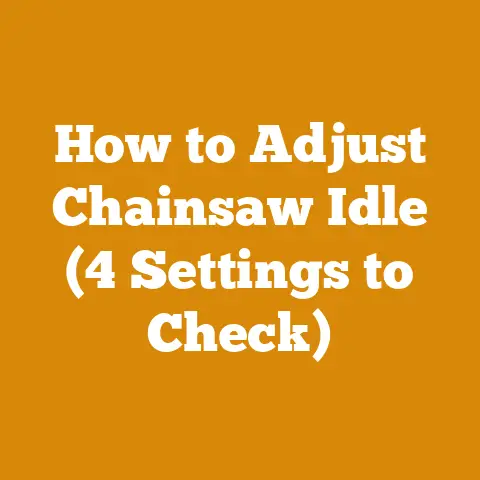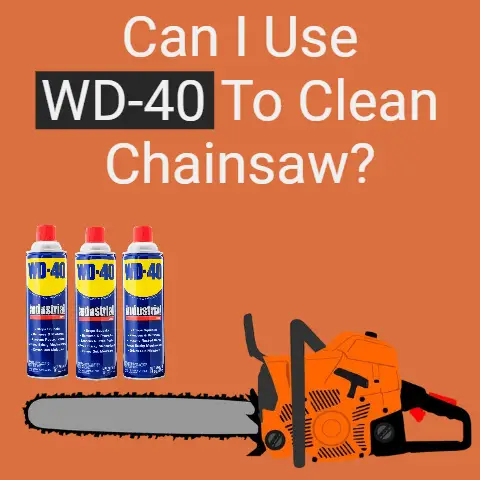Husqvarna 562XP Chain Size (5 Cutting Tips)
The Husqvarna 562XP: A Chainsaw Enthusiast’s Dream
The Husqvarna 562XP is more than just a tool; it’s a powerhouse that has earned its place among professionals and enthusiasts alike.
With its robust design and efficient performance, this chainsaw is built to tackle the toughest jobs.
Whether you’re in the middle of the forest or working in your backyard, knowing your chainsaw inside and out can make all the difference.
Understanding the Chain Size
You know that feeling when everything just clicks?
That’s what happens when you find the perfect chain size for your Husqvarna 562XP.
It’s not just about getting the job done; it’s about getting it done right.
The chain size affects everything from cutting speed to safety, so let’s dive deeper into what works best for this model.
Typically, the chain size for the Husqvarna 562XP has a 3/8-inch pitch and a .050-inch gauge.
But don’t just take my word for it – always check your specific model and requirements.
Why Chain Size Matters
When I first started using chainsaws, I underestimated the importance of chain size.
One day, while attempting to fell a massive oak tree, I realized my chain was too short.
It was a hard lesson learned, but it taught me the value of matching the right chain to the job at hand.
A properly sized chain ensures:
- Efficiency: The right chain size reduces cutting time and effort.
- Safety: A well-fitted chain minimizes kickback risks.
- Longevity: It prolongs the lifespan of your saw and chain.
5 Cutting Tips for the Husqvarna 562XP
Chainsaw work isn’t just about brute strength; it’s an art.
Over the years, I’ve honed my skills and picked up a few tricks along the way.
So grab a cup of coffee, and let’s chat about how to make the most of your Husqvarna 562XP.
1. Choose the Right Chain for the Job
Ever tried cutting a tough piece of wood with a dull knife?
That’s what it feels like using the wrong chain.
For the Husqvarna 562XP, you’ll typically find chain lengths between 18 to 28 inches.
But how do you choose?
- 18-20 inches: Ideal for smaller tasks or when precision is key.
- 22-24 inches: Offers a balanced blend of control and power.
- 26-28 inches: Best for large trees or heavy-duty cutting.
Personal Story: I remember one winter when I was working on clearing some land.
I started with an 18-inch chain, thinking it would be enough.
Halfway through, I switched to a 24-inch, and it made all the difference.
The cuts were smoother, and I finished hours ahead of schedule.
2. Regular Chain Sharpening
A sharp chain is like a well-oiled machine – everything runs smoothly.
If you’ve ever found yourself pushing against a log with all your might, only to see minimal progress, it’s time to sharpen that chain.
Step-by-Step Sharpening Guide:
- Secure Your Chainsaw: Use a vise or clamp to hold it steady.
- Identify the Right File: Match it to your chain’s pitch (usually a 3/8-inch file).
- File at the Correct Angle: Most Husqvarna chains recommend a 30-degree angle.
- Use Consistent Pressure: File each tooth evenly to ensure balanced cuts.
- Check Depth Gauges: Use a flat file to maintain proper depth.
I can’t emphasize enough how sharpening makes a difference.
There was this one job where I forgot my file kit at home.
By mid-day, my cuts were jagged and frustratingly slow.
Lesson learned – never leave home without your sharpening tools!
3. Maintain Proper Tension
Chain tension might not sound glamorous, but trust me, it’s essential.
Too tight, and you risk damaging your bar; too loose, and you’re looking at potential derailments.
How to Check Tension:
- Cold Check: The chain should fit snugly against the bar but allow you to pull it away slightly.
- Warm Check: After running, let it cool slightly and recheck – heat can expand metal.
One time while trimming some thick branches, I noticed my saw vibrating more than usual.
A quick tension adjustment fixed it instantly.
It was a reminder of how small tweaks can make big differences.
4. Use Correct Bar Length
The bar length isn’t just about reach; it’s about control and safety too.
While the 562XP can manage bars from 18 to 28 inches, choosing the right one is crucial.
Considerations for Bar Length:
- Task Size: Small tasks = shorter bars; large tasks = longer bars.
- Experience Level: New users might find shorter bars easier to handle.
- Balance and Weight: Longer bars add weight, affecting maneuverability.
I once tackled a large poplar tree with a 20-inch bar when I should’ve used a 24-inch.
The extra reach would’ve made felling safer and more efficient.
5. Clean and Lubricate Regularly
Imagine driving your car without oil – that’s what a dry chainsaw feels like.
Regular cleaning and lubrication prevent wear, overheating, and extend your saw’s life.
Cleaning Routine:
- After Every Use: Wipe down the chain and bar.
- Weekly Checks: Remove debris from sprockets and bar groove.
- Monthly Maintenance: Deep clean air filters and replace worn parts.
I learned this the hard way in my early days.
After ignoring regular maintenance, my saw seized up during a big storm cleanup.
Now, it’s part of my routine post-use ritual.
Safety Precautions
Working with chainsaws is thrilling but comes with risks.
Let’s chat about how to keep things safe out there:
- Wear Protective Gear: Helmets with face shields are non-negotiable.
- Check Chain Brake: Before starting, ensure it engages properly.
- Operate in Safe Zones: Keep others at least two tree lengths away.
A close call with kickback taught me the value of gear and awareness.
Safety first, always!
Prerequisites and Required Materials
Before you fire up that beast of a saw:
- Ensure you’ve got the right fuel mix (50:1 ratio).
- Have spare chains and bars ready.
- Keep tools handy for on-the-fly adjustments.
Extended Troubleshooting Tips
Chainsaws can be finicky at times. Here are some common issues and solutions:
- Chainsaw Won’t Start:
- Check spark plug condition – replace if fouled.
- Ensure fresh fuel mix – stale fuel causes starting issues.
- Chain Not Cutting Straight:
- Inspect for uneven teeth – sharpen consistently.
- Check bar alignment – warped bars affect cut direction.
- Chain Jams Frequently:
- Verify proper tension – loose chains jam easily.
- Clean sprocket area – debris buildup causes binding.
Common Questions and Concerns
I’ve answered countless queries over the years:
Q: How often should I replace my chainsaw chain?
A: If sharpening doesn’t improve performance or if damage is evident, replace it.
Q: Can I use any chain brand on my Husqvarna 562XP?
A: Stick to compatible brands recommended by Husqvarna for best results.
In-Depth FAQ Section
Let’s delve into some frequently asked questions:
Q: Is it okay to store my chainsaw outside? A: Not ideal!
Moisture causes rust and damage.
Store in a dry place.
Q: How can I reduce chainsaw kickback? A: Use low-kickback chains, keep the tip guard in place, and maintain sharpness.
Q: What’s causing my chainsaw to overheat? A: Check lubrication levels and ensure proper airflow around engine components.
Important Reminders and Next Steps
Regular checks are vital – they prevent minor issues from becoming bigger problems down the road.
Keep honing your skills; every cut teaches something new.
By understanding these elements of your Husqvarna 562XP and applying these tips consistently, you’ll enhance both your efficiency and safety while working with this powerful tool.
Happy sawing!






